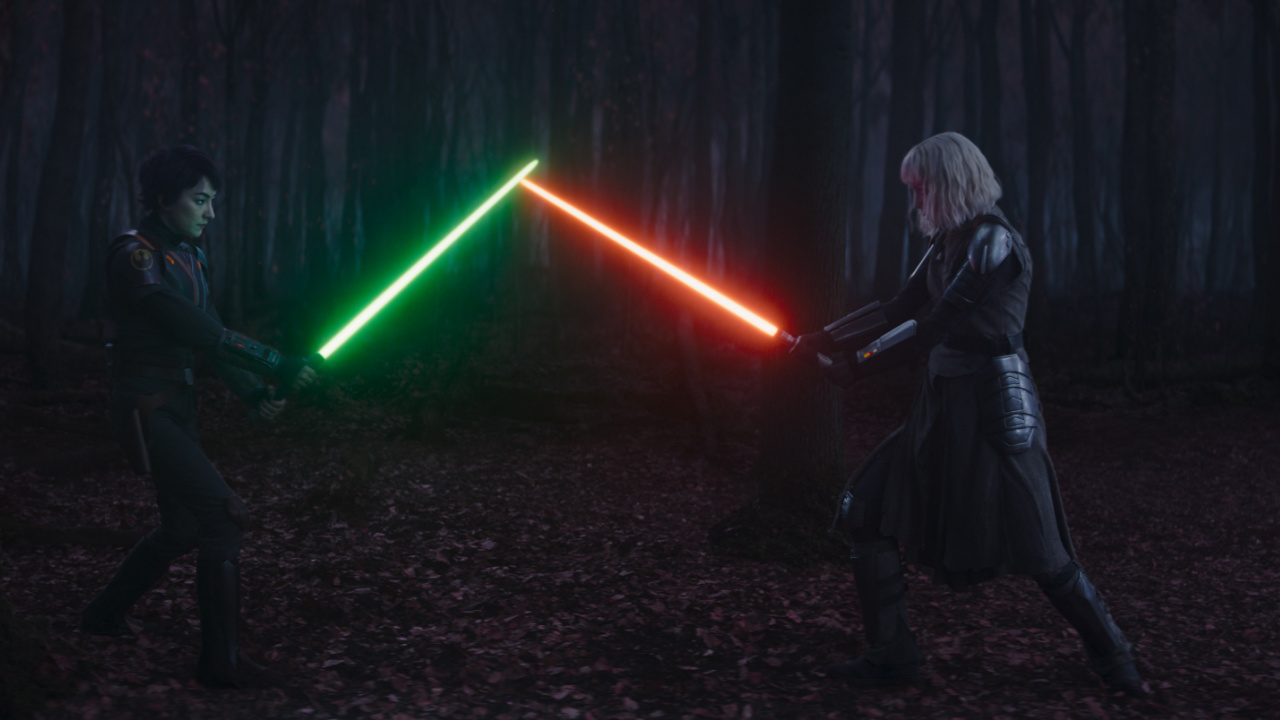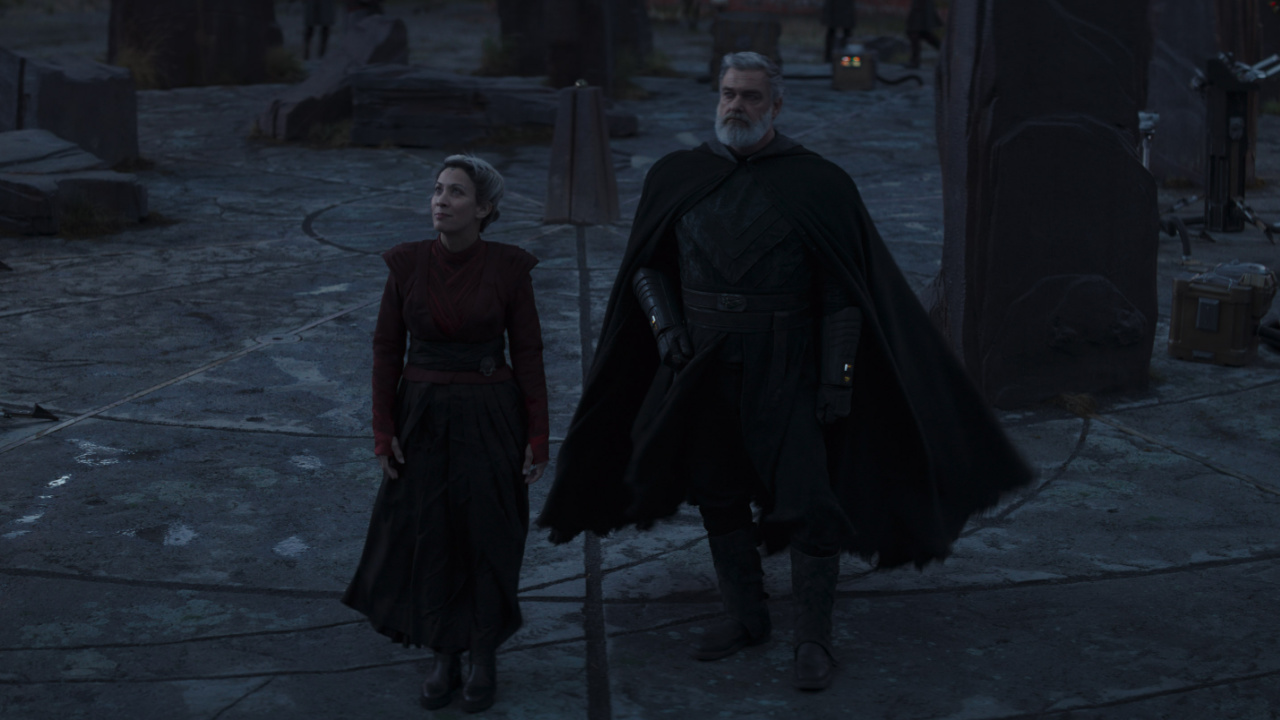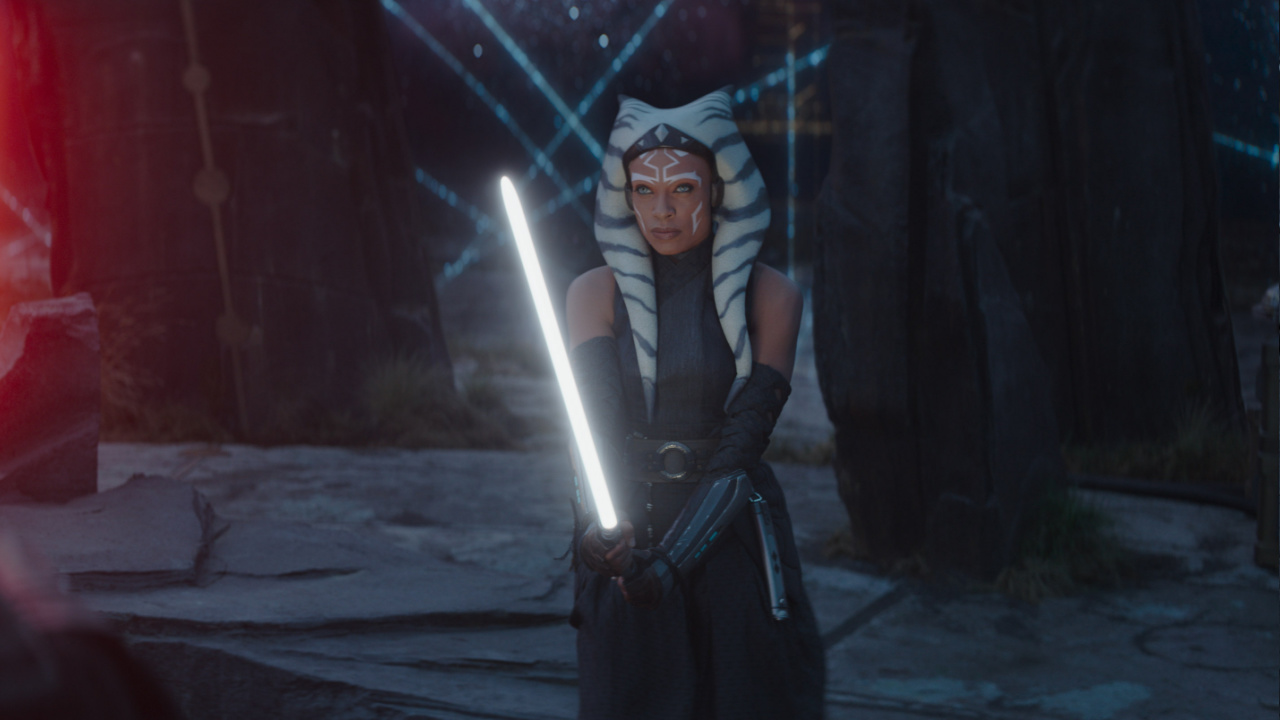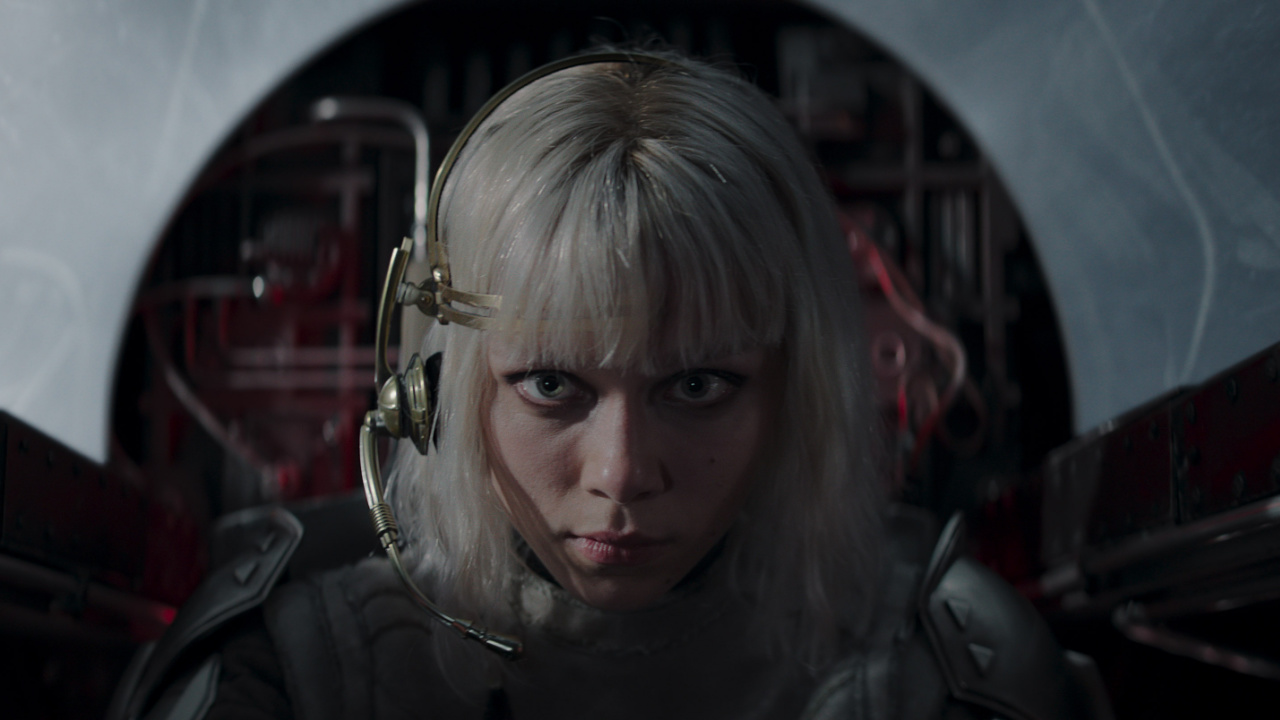After the delightfully compact and dogfight-filled third episode of Ahsoka, the show’s fourth episode takes a turn for the worse. The questionable close-quarters action from the first two episodes returns, some conversations raise questions about Star Wars lore and the franchise’s intentions for fans, and cameos play into the worst of what Star Wars has become.
While the characters and performances continue to shine, it’s becoming more difficult for them to outshine the less-than-satisfactory aspects of the show.
Disappointment Returns to Action

The first action sequence in episode four is one of the best “hand-to-hand” action scenes we’ve seen thus far. Quotation marks added because it’s unclear what to call a physical fight between two droids with more than the usual human pair of hands. The fight sees Huyang (David Tennant) engage an enemy droid who launches an enemy attack on the heroes’ downed ship on Seatos.
There’s a real sense of choreography and weight to the struggle, helped by some fantastic sound design that emphasizes the robots’ metallic strikes against one another and their environment. But that sense of weight disappears when Ahsoka (Rosario Dawson) and Sabine (Natasha Liu Bordizzo) enter the fray.
As with the first episodes, the scenes with unsatisfying action aren’t particularly bad; they’re lackluster. It’s almost worse that these sequences aren’t even laughably bad and merely play out like passable, but not much more, versions of Star Wars battles seen before. The action scenes with Sabine and Ahsoka are fine, and that’s a problem for a show that’s significantly about the action.
The best moments of the fights in this fourth episode are the pauses that allow for some striking tableaus. Whether battling lightsaber-wielders are taking a moment to assess their opponents in a massive and beautifully designed holomap or a character is left stunned by an enemy’s escape in a dense forest, it’s the images created in the breaks of action that are most compelling.
Wait, What Does That Mean?

While the first dialogue scenes of episode four are a bit clunky, there’s at least something interesting to them. Ahsoka and Sabine discuss the morality of searching for Ezra (Eman Esfandi), given that finding him means finding Thrawn (Lars Mikkelsen) and potentially creating a way for Thrawn to return to the galaxy and restart the galactic civil war.
Sadly, the more engaging conversations in the episode confuse more than they create excitement about themes or plots.
At one point, Morgan Elsbeth (Diana Lee Inosanto) tells Sith Lord Baylan (Ray Stevenson) to have faith, and he says he lost his faith a long time ago. It’s a baffling line in a franchise that’s fairly explicit about the religious nature of Jedi and Sith codes. These codes come with their own tenets and require a strong relationship to the Force, something that (at various times and places in the Star Wars universe) some people don’t believe exists.
It’s a confusing line that becomes more confusing when, shortly after, he calls Elsbeth’s navigational techniques, which we know draw on ancient systems, “witchcraft” with a somewhat snide tone. These two lines thoroughly confuse faith and what “magic” means in the Star Wars universe when both have historically been associated with Force users.
Star Wars’ Worst Impulses

Baylan is part of another frustrating conversation later when he and Ahsoka face off and discuss her relationship with her former master, Anakin Skywalker (Hayden Christensen). Invoking the past like this is par for the course in Star Wars; it’s been happening since 1977, but Ahsoka’s response to it is a fairly emphatic “I’m not here to discuss my past,” a less aggressive but no less clear variation on The Last Jedi’s “let the past die.”
It’s a line that feels directed at the fans, just like its movie counterpart. Yet a few minutes later, the episode features an appearance from an uncanny valley de-aged Christensen as Anakin. It’s just another instance of the de-aged cameo that’s become all too common in Star Wars media and feels incredibly hollow and uncomfortable every time.
A lesser offense but another reminder of the franchise’s faults comes with the “introduction” of rebel pilot Carson Teva (Paul Sun-Hyung Lee). It’s the character’s first appearance in the show. Yet, his arrival feels like we’re meant to be heralding an old friend because of his appearance in other Star Wars Disney+ shows. These now fairly regular “you know this character” moments in Star Wars shows break the immersion of the show we’re watching and feel more like advertisements for other media than anything else, especially for fans who don’t recognize the ostensibly recognizable characters.
The Characters Remain The Best Part of the Show

Luckily, the characters who have been appropriately introduced for audiences only watching Ahsoka continue to be a joy. Besides the meaningful conversation between Ahsoka and Sabine about their potentially conflicting responsibilities to Ezra and the galaxy, more moments between them feel like those of ex-romantic partners, and the Sith characters have a little more time to shine in this episode.
Early on, there’s a “don’t worry about me”/“I’m not” back and forth between Sabine and Ahsoka that feels very much like two people who deeply care for one another, attempting to play off that concern and affection. When the two set out to retrieve the map to Thrawn and Ezra from Elsbeth and the Sith, Huyang requests that they “stay together” because they always do better together. It’s a sweet moment that leads to knowing smiles between the two women, which may be the best part of the episode.
Competing for the “best part of the episode” title are a classic but well-delivered “join the dark side” monologue from Stevenson and every moment that Ivanna Sakhno is on screen as his apprentice Shin Hati. Stevenson makes the most of his monologue, which hits upon beats we’ve heard for forty years. He makes it feel rehearsed but meaningful in a way that lends the scene a palpable tension. Sakhno doesn’t get many lines, but her snarls, grunts, and smirks lend Shin an intensity that’s impossible to look away from and create an anticipation to see more of her as the series progresses.
The fact that the central characters are so fun to watch and the performances so committed makes it more disappointing that nearly every other aspect of the episode fails to live up to its potential, confuses Star Wars’ most fascinating and meaningful themes and offers self-sabotaging references.
Grade: 5/10

